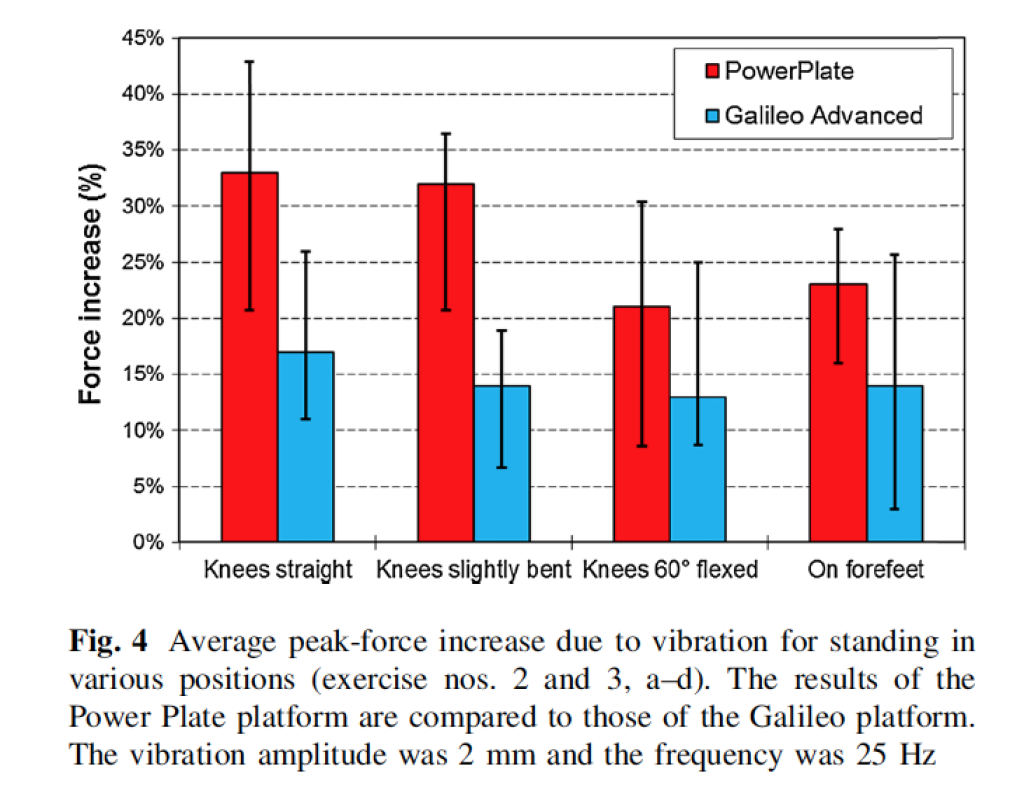Eur Spine J. 2014 Mar;23(3):666-72. doi: 10.1007/s00586-013-3087-8. Epub 2013 Nov 8.
In vivo measurements of the effect of whole body vibration on spinal loads
Rohlmann A1, Schmidt H, Gast U, Kutzner I, Damm P, Bergmann G.
Abstract
PURPOSE: It is assumed that whole body vibration (WBV) improves muscle strength, bone density, blood flow and mobility and is therefore used in wide ranges such as to improve fitness and prevent osteoporosis and back pain. It is expected that WBV produces large forces on the spine, which poses a potential risk factor for the health of the spine. Therefore, the aim of the study was to measure the effect of various vibration frequencies, amplitudes, device types and body positions on the loads acting on a lumbar vertebral body replacement (VBR).
METHODS: Three patients suffering from a fractured lumbar vertebral body were treated using a telemeterized VBR. The implant loads were measured during WBV while the patients stood on devices with vertically and seesaw-induced vibration. Frequencies between 5 and 50 Hz and amplitudes of 1, 2 and 4 mm were tested. The patients stood with their knees straight, slightly bent, or bent at 60°. In addition, they stood on their forefeet.
RESULTS: The peak resultant forces on the implant increased due to vibration by an average of 24% relative to the forces induced without vibration. The average increase of the peak implant force was 27% for vertically induced vibration and 15% for seesaw vibration. The forces were higher when the legs were straight than when the knees were bent. Both the vibration frequency and the amplitude had only a minor effect on the measured forces.
CONCLUSIONS: The force increase due to WBV is caused by an activation of the trunk muscles and by the acceleration forces. The forces produced during WBV are usually lower than those produced during walking. Therefore, the absolute magnitude of the forces produced during WBV should not be harmful, even for people with osteoporosis.
PMID: 24201510 [PubMed – in process]
PMCID: PMC3940795
http://www.ncbi.nlm.nih.gov/pmc/articles/PMC3940795/pdf/586_2013_Article_3087.pdf
